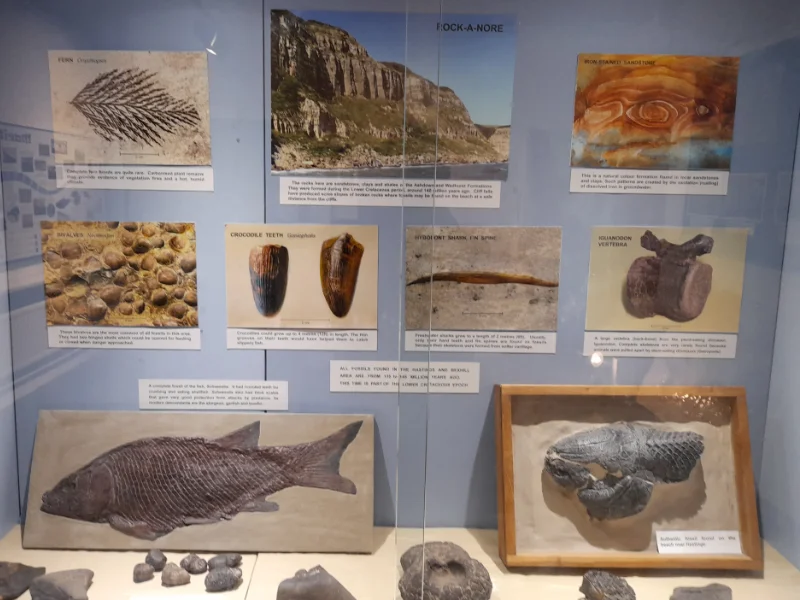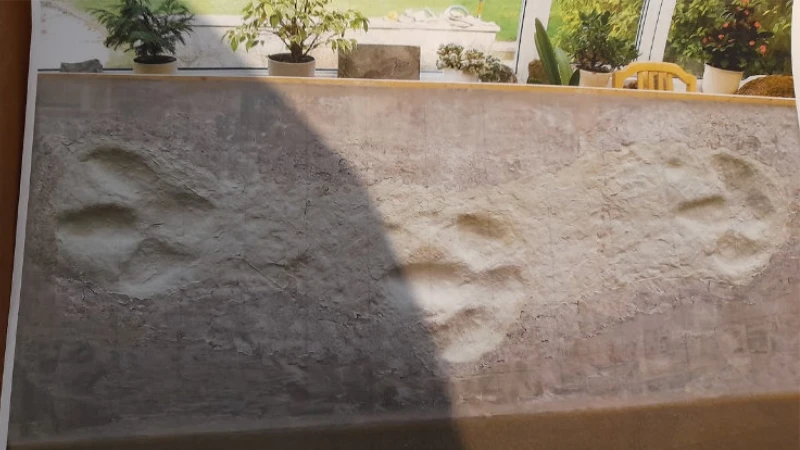Fossils and Dinosaurs

The Shipwreck Museum at Rock-a-Nore is within one of the most important areas in Britain for dinosaur bones and footprints. The fossil display in the Museum includes a variety of local fossils from which we can learn much about the life forms and environments of Hastings 140 million years ago. These include dinosaurs, such as Baryonyx, Polacanthus and Iguanodon. By studying and reconstructing fossil specimens we can make a journey back to the age of the dinosaurs.
Recently one of the most exciting discoveries was a dinosaur trackway of three footprints at Fairlight, near Hastings. A full-size cast will soon be on display in the Museum.

140 million years ago southern England was a landscape of meandering rivers, flood plains and lakes. Molluscs, fish and sharks inhabited the rivers and lakes, while the land was dominated by crocodiles and dinosaurs. Eventually layers of sand, mud and clay buried their shells, bones and footprints – which then became fossils as the sediments were gradually converted into stone.
Complete skeletons are very rare because animal remains would have been torn apart by scavengers, and then scattered by rain-storms or floods. Among the most common local fossils are bivalve shells, fish scales and small rounded teeth, but dinosaur bones have been found occasionally. If you go fossil-hunting on the beach between Rock-a-Nore and Pett Level, please do not go near the cliffs. These are very dangerous, as rocks can fall at any time – and without warning. Fossils can be found at a safe distance from the cliff, and always check the tide times.
